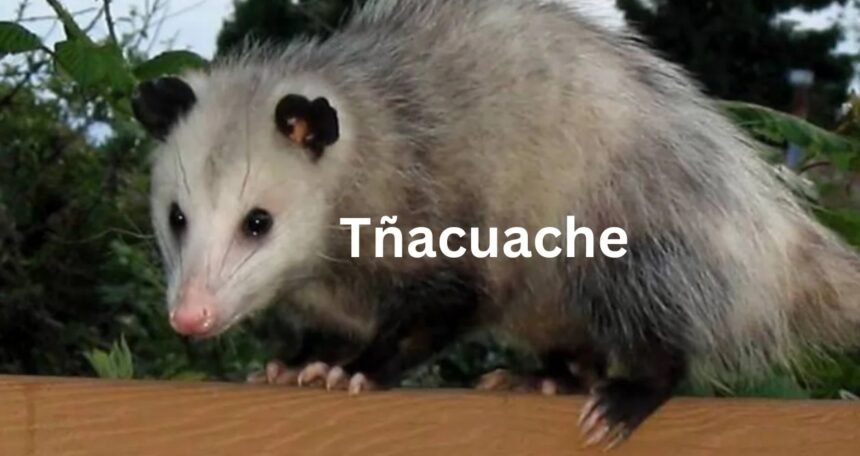Introduction to the Tñacuache
Deep in the jungles of Central and South America lurks a creature that many have heard about but few have seen—the Tñacuache. This enigmatic mammal, also known as the opossum, is more than just a curious character of folklore; it plays an important role in its ecosystem and has captivated researchers and nature enthusiasts alike. With its unique features and fascinating behaviors, the Tñacuache invites us to explore the wilds of Latin America. Journey with us as we unravel the mysteries surrounding this elusive marsupial, from its physical traits to its cultural significance!
Physical Characteristics and Habitat
The Tñacuache, known scientifically as the opossum, boasts a distinctive appearance that sets it apart from other mammals. Its most notable feature is its prehensile tail, which aids in balance and climbing. With coarse fur that ranges from gray to brown, this creature blends seamlessly into its forest surroundings.
Measuring about 15 to 20 inches long, excluding the tail, Tñacuache are relatively small yet agile animals. Their pointed snouts house sharp teeth suited for their omnivorous diet.
These fascinating creatures thrive in diverse habitats across Central and South America. They prefer wooded areas but can adapt well to urban environments too. Often found in trees or shrubs during the day, they come alive at night when they forage for food. This adaptability plays a crucial role in their survival amidst changing landscapes.
Diet and Behavior of the Tñacuache
The Tñacuache, also known as the opossum, has a diverse diet that reflects its adaptability. It is an omnivore, consuming fruits, insects, small mammals, and carrion. This varied menu allows it to thrive in different environments across Central and South America.
Behaviorally, Tñacuaches are primarily nocturnal creatures. They venture out at night to forage for food while avoiding daytime predators. Their keen sense of smell helps them locate tasty morsels in the dark.
Tñacuaches are solitary animals but can be social during mating seasons. When threatened, they employ a unique defense mechanism: playing dead. By rolling over and emitting a foul odor, they trick potential predators into losing interest.
These fascinating mammals have remarkable climbing skills too. They often seek refuge in trees or dense vegetation when feeling vulnerable or searching for food sources high above the ground.
Cultural Significance and Folklore Surrounding the Tnacuache
The Tñacuache, known as the opossum in English, holds a special place in the folklore of Central and South America. Many indigenous cultures view this creature with a blend of reverence and intrigue.
Stories often depict it as clever and resourceful, symbolizing adaptability in the face of adversity. There are tales that describe its ability to play dead, leading people to associate it with themes of survival.
In some regions, the Tñacuache is seen as a trickster figure. Its antics capture attention and imagination alike. Children grow up hearing stories about how this little mammal outsmarts predators or navigates tricky situations.
Celebrations sometimes feature art inspired by the tnacuache’s unique characteristics. Masks, sculptures, and even dances pay homage to this elusive animal’s role in local mythology. The connection between humans and Tñacuaches runs deep within cultural narratives across various communities.
Conservation Efforts and Threats to the Tnacuache’s Survival
The Tñacuache, a remarkable marsupial native to Central and South America, faces several threats that jeopardize its existence. Habitat destruction is perhaps the most pressing concern. Deforestation for agriculture and urban development shrinks their living space.
Additionally, road accidents claim many tnacuaches each year as they often venture into human-populated areas in search of food. Climate change also plays a role; it disrupts their habitat and affects food availability.
Conservation efforts are underway. Various organizations advocate for protected areas where tnacuaches can thrive without disturbance. Community education programs highlight the importance of preserving these unique creatures.
Local governments are starting to implement regulations aimed at minimizing deforestation and promoting sustainable land use practices. Engaging local communities is crucial to ensuring long-term survival for this elusive mammal in an increasingly fragmented world.
How to Spot a Tñacuache in the Wild
Spotting a Tñacuache in the wild can be a thrilling experience. These nocturnal creatures are most active at night, so venturing out after sunset increases your chances of an encounter.
Look for signs of their presence. Tnacuaches often leave behind tracks and droppings that can lead you to them. Keep an eye on trees; they are known to climb surprisingly well.
Listen closely for rustling sounds, especially during quiet nights. Their unique vocalizations might help pinpoint their location too.
A flashlight with red filters is ideal for illuminating potential hiding spots without startling these shy mammals. Focus on areas near water sources or dense foliage where they feel safe.
Patience is key when searching for a Tñacuache. They may take their time emerging from cover, but the wait could reward you with a glimpse of this fascinating animal in its natural habitat.
Conclusion: The Fascinating World of the Tnacuache
The Tñacuache, a remarkable mammal, captivates with its unique traits and elusive nature. Found primarily in Central and South America, this creature thrives in diverse habitats ranging from lush rainforests to arid scrublands.
Its nocturnal lifestyle adds an air of mystery. Observing the Tñacuache can feel like discovering a hidden treasure within the wild. Each sighting invites wonder about its behavior and role in the ecosystem.
Rich folklore surrounds this animal, weaving it into cultural narratives that highlight its significance to local communities. People often share tales that celebrate or caution against encounters with this intriguing marsupial.
As conservation efforts ramp up, awareness of threats facing the Tñacuache grows. Protecting their habitat is crucial for ensuring future generations can experience these fascinating creatures firsthand. The journey to understand the tnacuache continues as researchers delve deeper into their world and behaviors.
FAQs
The fascinating world of the Tñacuache continues to capture the imagination of those fortunate enough to encounter this elusive mammal. Its unique characteristics and behaviors make it an intriguing subject for both researchers and nature enthusiasts alike.
As interest grows in protecting this remarkable creature, awareness about its role in ecosystems increases as well. By understanding more about the tnacuache’s habitat, diet, and cultural significance, we can foster initiatives that ensure its survival for generations to come.
If you have questions or want to learn more about this captivating animal, check out some frequently asked questions below.
Q: What is a Tñacuache?
A: The Tñacuache is a marsupial native to Central and South America, often recognized by its distinctive appearance resembling that of an opossum.
Q: Where can I find a Tñacuache?
A: Tñacuaches typically inhabit forests, grasslands, and urban areas throughout their range. They are primarily nocturnal creatures.
Q: What do Tñacuaches eat?
A: These mammals are omnivorous; they enjoy fruits, insects, small animals like rodents or birds, and scavenged food sources.
Q: Are Tñacuaches endangered?
A: While not listed as endangered globally, certain populations face threats from habitat loss due to deforestation and human encroachment on their natural habitats.
Q: How long do Tñacuaches live?
A: In the wild, a typical lifespan is around two to four years but may extend longer in captivity under ideal conditions.
Q: Can I keep a Tñacuache as a pet?
A: It’s generally not advisable to keep them as pets since they have specific dietary needs and care requirements best suited for their natural environment.








